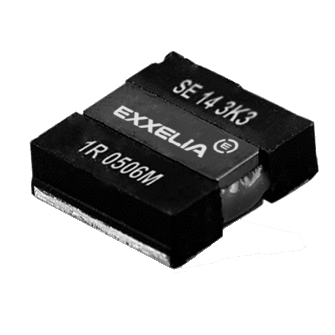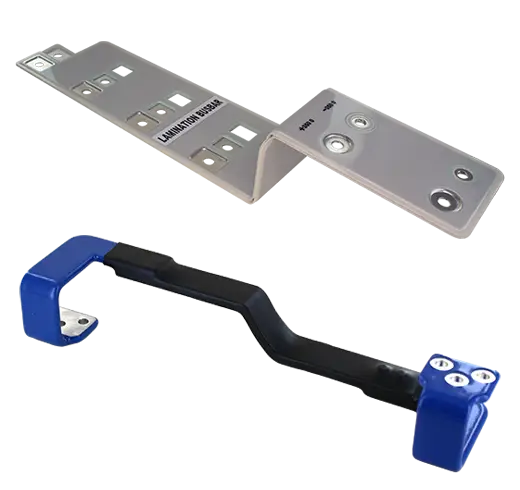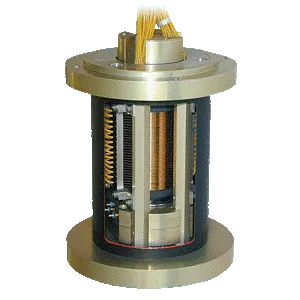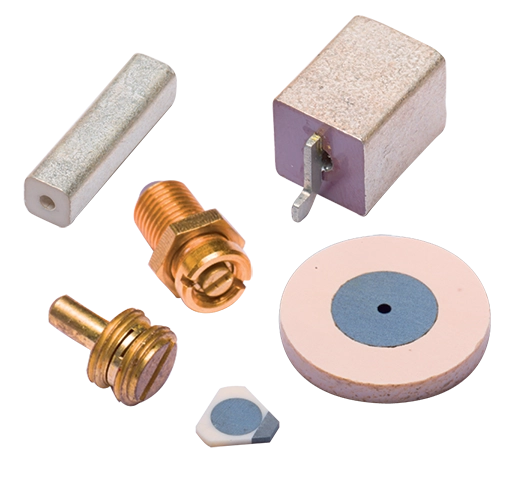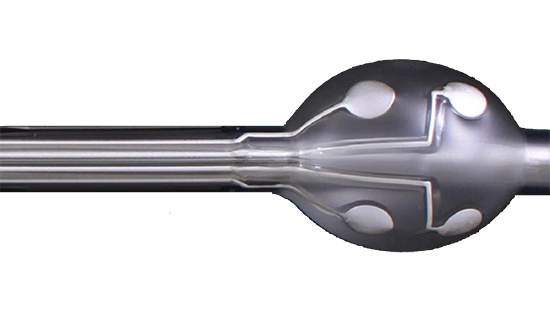
Aluminum Electrolytic Capacitors
|
Name
|
Download
|
Capacitance
|
Voltage Rated AC
|
Tolerance
|
Mounting
|
Operating Temp
|
RoHS
|
Voltage Rated DC
|
|---|---|---|---|---|---|---|---|---|
| FELSIC C037- C039 | 100µF ~ 150000µF | - | ±50% | - | -55°C ~ 85°C | ROHS | 10V ~ 400V | |
| FELSIC 105 | 100µF ~ 470000µF | - | -10% +30% | - | -55°C ~ 105°C | ROHS | 16V ~ 450V | |
| FELSIC 105 LP | 1500µF ~ 220000µF | - | ±30% | - | -55°C ~ 105°C | ROHS | 10V ~ 450V | |
| FELSIC 105 TFRS | 470µF ~ 68000µF | - | ±50% | - | -55°C ~ 105°C | ROHS | 10V ~ 100V | |
| FELSIC 125 FRS | 220µF ~ 150000µF | - | -10% +50% | - | -55°C ~ 125°C | ROHS | 16V ~ 350V | |
| FELSIC 85 | 68µF ~ 680000µF | - | -10% +30% | - | -55°C ~ 85°C | ROHS | 10V ~ 630V | |
| FELSIC HC | 100µF ~ 3121000µF | - | ±20% | - | -40°C ~ 85°C | ROHS | 10V ~ 500V | |
| FELSIC HV | 1000µF ~ 47000µF | - | ±20% | - | -55°C ~ 105°C | ROHS | 160V ~ 450V | |
| FELSIC I-PLUS | 1500µF ~ 33000µF | - | ±20% | - | -55°C ~ 85°C | ROHS | 200V ~ 500V | |
| PG-2HED | 680µF ~ 6800µF | - | ±20% | - | -40°C ~ 70°C | Non ROHS | 350V ~ 450V | |
| PG-5KL | 680µF ~ 18000µF | - | ±20% | - | -40°C ~ 105°C | Non ROHS | 350V ~ 500V | |
| PG-6DI | 330µF ~ 470000µF | - | ±20% | - | -40°C ~ 85°C | Non ROHS | 50V ~ 550V | |
| PG-8K | 1000µF ~ 200000µF | - | ±20% | - | -40°C ~ 105°C | Non ROHS | 50V ~ 500V |
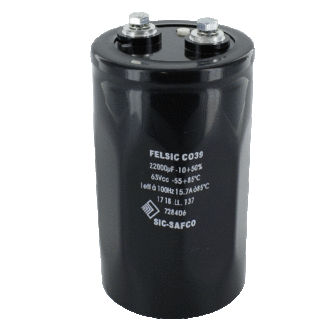
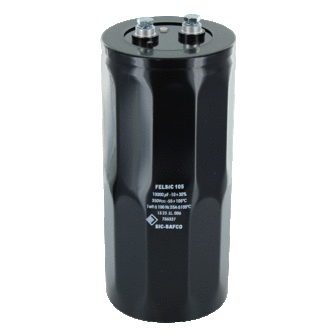
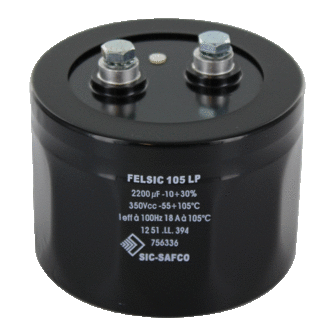
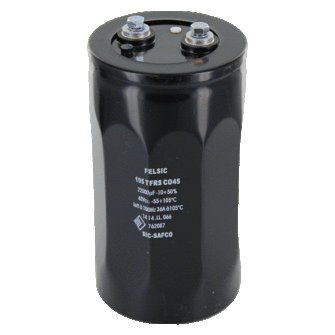
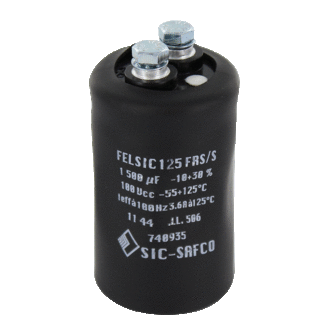
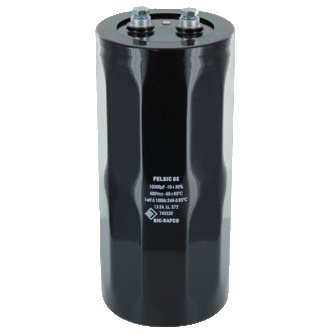


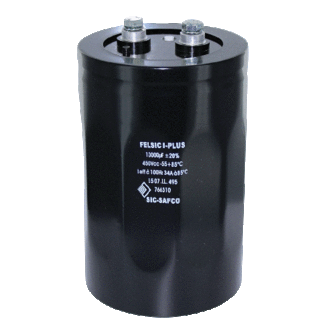
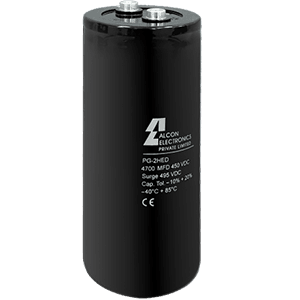
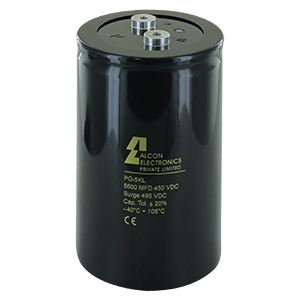
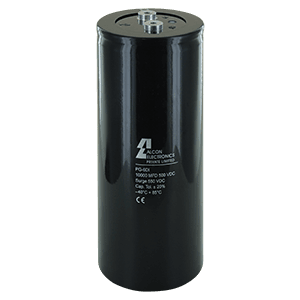

Aluminum Electrolytic Capacitors
Exxelia distinguishes itself by engineering its own electrolytes, a unique approach that ensures unparalleled longevity in the market. Exxelia aluminum electrolytic capacitors deliver not only high capacitance values (up to 2.2F) and extended service life but also thrive under extreme temperatures and are available as catalog product or custom design.
Designed for high energy applications, screw terminals aluminum electrolytic capacitors are widely used into the railway, medical, UPS and charge/discharge sectors, praised for their substantial energy density and durability. Exxelia also offers the possibility to provide assembly of screw terminal capacitors banks of 4, 6, 8 or more capacitors.
Meanwhile, Exxelia snap-in aluminum electrolytic capacitors set industry benchmarks with their exceptional lifespan at 105°C and broad operating temperature range (-55°C to +125°C), making them indispensable for railway rolling stock, signaling equipment, solar panel inverters, and military-grade power supplies.
Exxelia radial leaded aluminum electrolytic capacitors range included cylindrical capacitors and rectangular low-profile flat packaging products series with operating temperature up to 125°C. They can withstand up to 50g vibrations and 92,000 ft altitude while demonstrating a long lifetime thanks to their nearly hermetic sealing, which makes them perfect for power supplies in aircraft and radar systems . This range include three rectangular low-profile flat packaging products series with operating temperature up to 125°C.
Finally, our axial capacitors are recognized for their wide temperature range (-55 to +145°C), high energy density, and reliability, catering to the railway, military, and power supply sectors with superior performance.



